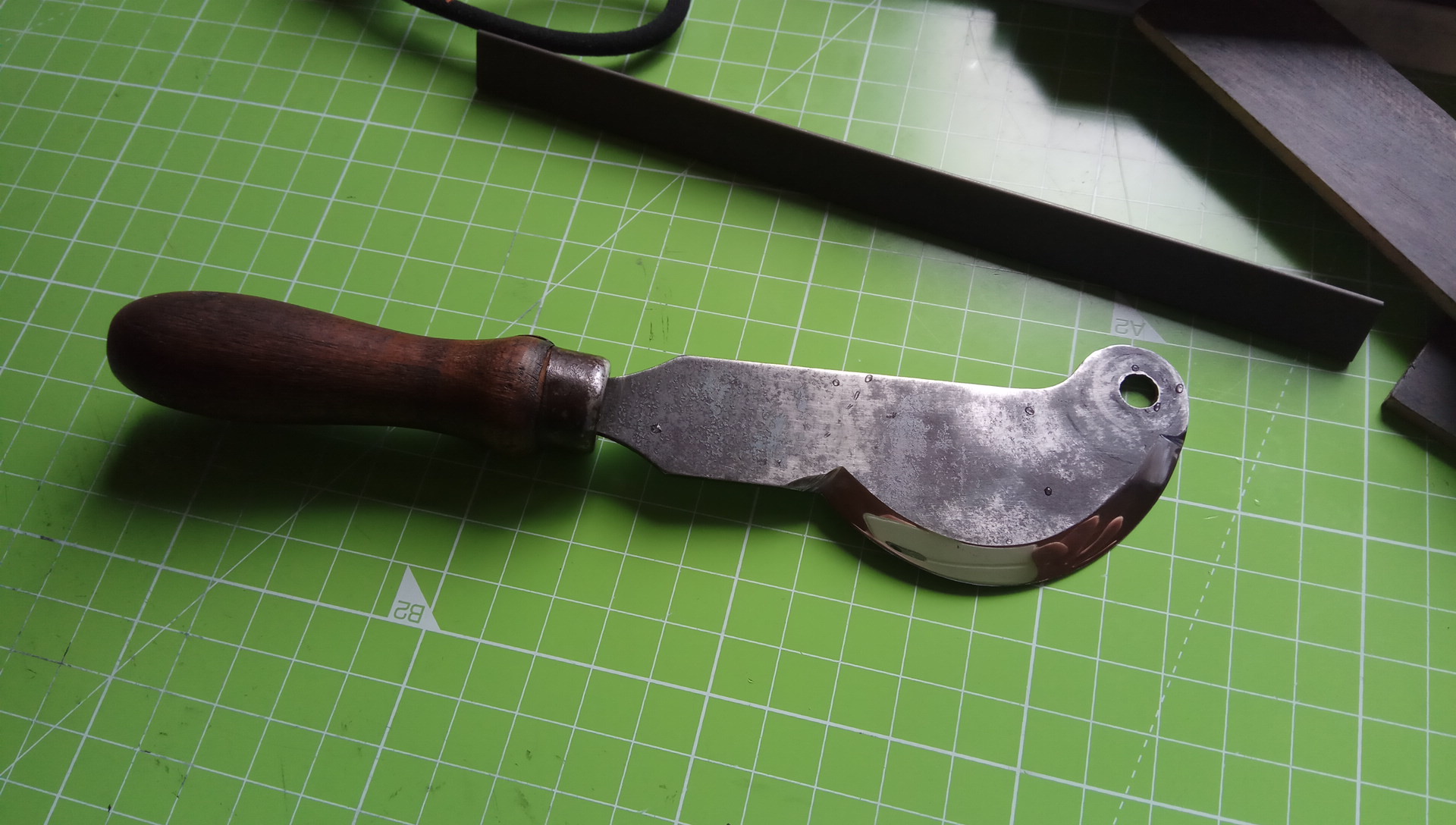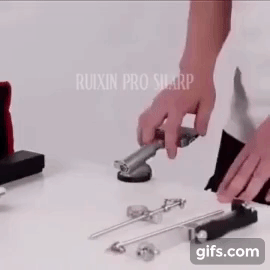Today i used the RUIXIN/ADAEE stones for sharpening a small stiff beater kitchen knife without the Ruixin contraption. Imho this is worth sharing, because it was my very first time that i sharpened a knife free-hand on a stone. I have no prior experience, practice, or whatever, with free hand sharpening! I could have done the sharpening on the contraption today but for various minor reasons i spontaneously decided to try my first free hand job instead. I certainly felt inspired by Alex's video, i got that inspiration months ago. Back then i was amused about the use of such a small stone for free hand sharpening, but i stumbled upon a few amazon customer reviews for the RUBY stone which indicated free hand sharpening too. So i knew that it is definitely possible to "abuse" these tiny cheap stones for the job!
While i don't have any experience with free hand sharpening, i have enough experience and practice with free hand stropping. (...) Cutting the story of the little fun sharpening session short, the process felt simple, natural, straight-forward, and was successful. The blade had many (minor) nicks but it could saw through printer paper, the edge was not flat-rounded and didn't have any defined bevel. Because of the nicks it was clear to me to start with the lowest grit stone from my collection, the crooked-worn RUIXIN120. I raised a burr on either side, could see the grinding progress well. It was easy enough, a delight! Then I jumped to ADAEE2000, did alternate strokes and didn't check for the burr anymore (because alternate strokes reduce/remove the burr). Because it was so easy and fun, i did a few strokes more on ADAEE3000 with no intentions. Checked the apex with a flashlight, couldn't detect any reflecting light, cha! At that point the knife could slice through printer paper already, cleanly. Next, the free hand stropping step was not necessary but i did it after all. The way i strop, it definitely creates a micro bevel (polished quality), but that's fine with me. Cut test results were about the same, now push-cutting through printer paper, the knife can cut through tomato skin okay, to me that's a working edge, no further refinements wanted. When i do free hand stropping, i always use the same 1 grit level (namely the SiC compound); only when performing guided stropping, do i care to use grit level progression (2-5 levels) and achieve more impressive sharpening results.
I completed my very first free hand sharpening job in no time, didn't encounter any problems and am pleased with results, invested time, efforts, costs. I had soaked all 3 stones in water and i cleaned them regularly during the process, and i didn't use any oil or soap during the sharpening. Just the stone with pure water. All nicks are gone, too. No sweat was broken. Easy peasy.
Made my day! Congratulations to myself lol
Question: Will i do free hand sharpening more often in future?
Answer: Not really. If all knife conditions are met (cheap old small knife with short blade, no major nicks, only micro nicks, knife with no set bevel), i would still have to be in the proper mood or have some concrete motivation like a time constraint. I must admit though that this short sharpening session was really efficient (efforts, time).
While i don't have any experience with free hand sharpening, i have enough experience and practice with free hand stropping. (...) Cutting the story of the little fun sharpening session short, the process felt simple, natural, straight-forward, and was successful. The blade had many (minor) nicks but it could saw through printer paper, the edge was not flat-rounded and didn't have any defined bevel. Because of the nicks it was clear to me to start with the lowest grit stone from my collection, the crooked-worn RUIXIN120. I raised a burr on either side, could see the grinding progress well. It was easy enough, a delight! Then I jumped to ADAEE2000, did alternate strokes and didn't check for the burr anymore (because alternate strokes reduce/remove the burr). Because it was so easy and fun, i did a few strokes more on ADAEE3000 with no intentions. Checked the apex with a flashlight, couldn't detect any reflecting light, cha! At that point the knife could slice through printer paper already, cleanly. Next, the free hand stropping step was not necessary but i did it after all. The way i strop, it definitely creates a micro bevel (polished quality), but that's fine with me. Cut test results were about the same, now push-cutting through printer paper, the knife can cut through tomato skin okay, to me that's a working edge, no further refinements wanted. When i do free hand stropping, i always use the same 1 grit level (namely the SiC compound); only when performing guided stropping, do i care to use grit level progression (2-5 levels) and achieve more impressive sharpening results.
I completed my very first free hand sharpening job in no time, didn't encounter any problems and am pleased with results, invested time, efforts, costs. I had soaked all 3 stones in water and i cleaned them regularly during the process, and i didn't use any oil or soap during the sharpening. Just the stone with pure water. All nicks are gone, too. No sweat was broken. Easy peasy.
Made my day! Congratulations to myself lol
Question: Will i do free hand sharpening more often in future?
Answer: Not really. If all knife conditions are met (cheap old small knife with short blade, no major nicks, only micro nicks, knife with no set bevel), i would still have to be in the proper mood or have some concrete motivation like a time constraint. I must admit though that this short sharpening session was really efficient (efforts, time).
Last edited:






 thing:
thing:


